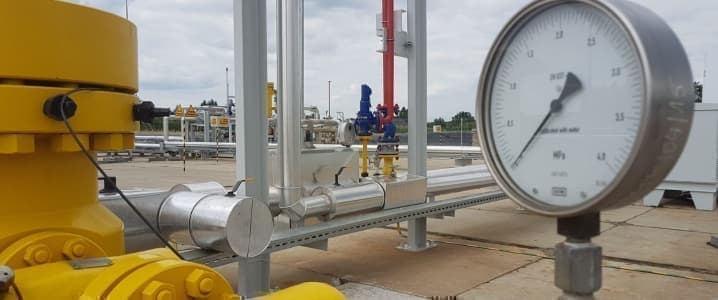U.S. natural gas prices fell below $2/MMBtu on Friday for the first time in nearly four years.
The gas market is suffering from oversupply, as the shale industry has drilled the market into another bust. The share prices for top gas players were deep into red territory on Friday. Range Resources, for instance, was off by more than 8 percent.
The story has been the same for quite a while. Natural gas production has surged more or less for a decade, and much of it was soaked up by new gas-fired power plants, new petrochemical facilities, or otherwise exported via new LNG export terminals. But production continued to climb, and here we are – a mild start to the winter and prices have fallen off a cliff.
Part of the problem is the ongoing production increases in the Permian with total disregard to any price signal. Permian drillers are after the oil, leading to continued output increases of associated gas, despite prices often traded at or even below zero.
The market has become so depressed that financial pressure in the Marcellus shale is increasing. Chevron took an $11 billion write down in the fourth quarter, much of it the result of its devalued assets in Appalachia. Only days ago, EQT, the largest gas producer in the country, announced a $1.8-billion write down, while Moody’s downgraded the company’s credit rating into junk territory.
EQT’s CEO said in December that “a lot of this development doesn’t work as well at $2.50 gas.” Well, if he doesn’t like $2.50 gas, he’s really not going to like sub-$2 gas.
Meanwhile, the oversupply issue is not isolated to the United States. The global market for LNG is also increasingly depressed, due to weaker-than-expected demand and the wave of new export capacity that came online in 2019. Related: How Important Is The Suriname Oil Discovery?
Spot prices for LNG in Asia – the closely-watched JKM marker – fell below $5/MMBtu, a shockingly low level for winter months. Worse – from the perspective of exporters – prices could fall further still. “JKM is expected to fall close to $3/MMBtu in the months ahead, which would leave the potential for sub-$3/MMBtu assessments on select days this summer,” according to S&P Global Platts Analytics.
The problem is that global LNG capacity continues to rise, even as China – who everyone seems to think will gobble up every last cargo – has seen its rate of economic growth slow. Moreover, China is set to see increased volumes of gas imports from the newly started Power of Siberia gas pipeline from Russia.
The cycles for the LNG market are slow, which magnifies the boom and busts. The wave of export terminals that came online in 2019 were the result of a wave of investment made earlier in the decade, which itself was an outgrowth of very high prices. LNG supply simply can’t react to short-term swings. Related: China’s Cheap Electric Vehicles Could Disrupt Global Markets
Demand is also not as responsive as some might think. Many shipments are insulated from market swings to some degree because they are signed under long-term contracts with fixed prices, often linked to the price of crude oil.
That means that low spot prices may not lead to a correction in the market. S&P says the spot market only accounts for about a quarter of the total market. In other words, it’s not quite as easy for buyers to scoop up cheap LNG because they are already locked in to certain commitments. Ultimately, that could extend the downturn more than otherwise might be the case.
S&P said that JKM prices falling below $3/MMBtu will put serious financial pressure on exporters who are exposed to spot prices. Liquefying gas and shipping it around the world doesn’t really work at $3/MMBtu.
That also means that U.S. shale gas drillers, already dealing with a questionable business model, may not be able to depend on dumping excess supplies onto the global market. There have already been about 200 bankruptcies in the North American oil and gas sector since 2015. That figure is surely set to rise this year.
By Nick Cunningham of Oilprice.com
More Top Reads From Oilprice.com:
- Is This The End For Big Oil Dividends?
- The Hottest Energy Investment Niche Of 2020
- Oil Is The Only Way Back Up For Venezuela


















